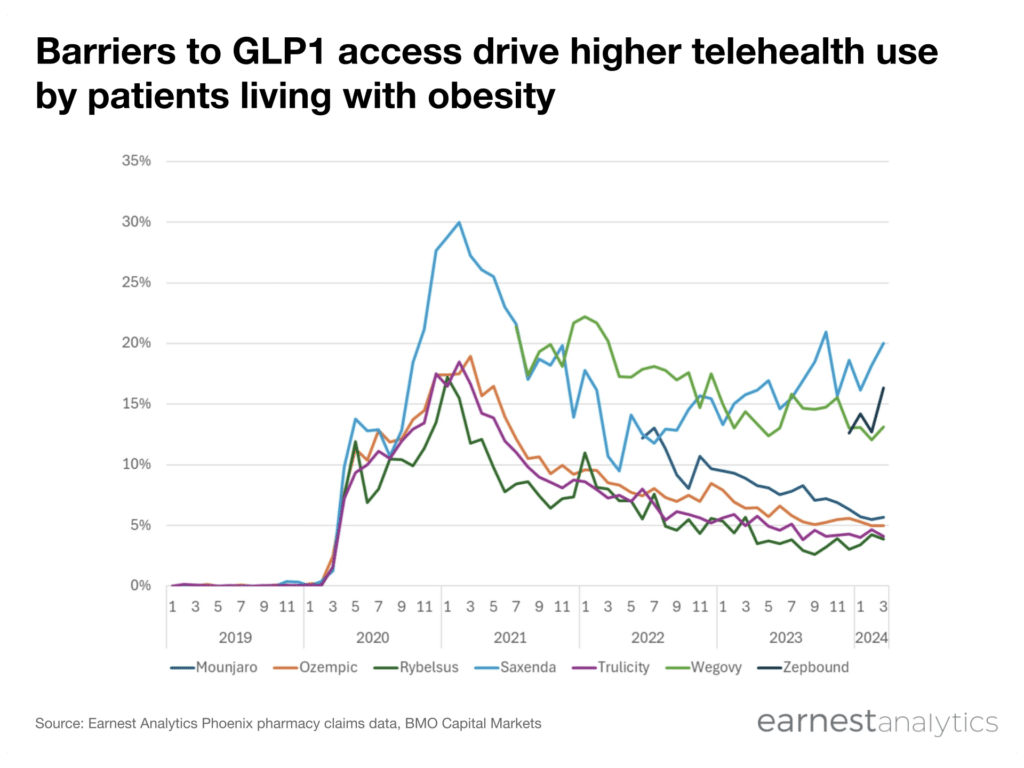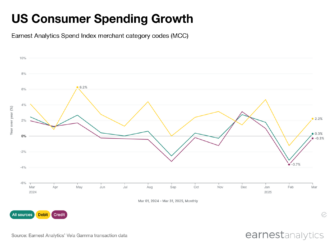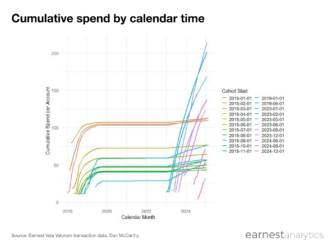Barriers to GLP1 access drive higher telehealth use by patients living with obesity

Contact Sales for more.
Earnest Analytics partnered with the BMO Capital Markets’ BioPharma team to add insight into GLP1 therapeutic usage.
Telehealth prescription continues to be common in this category of therapeutics, though interestingly, there appears to be a divergence between T2D treatments and Obesity treatments. We took a look at telehealth prescription trends to get a better understanding of the rise in alternative sites of care for patients looking to gain access to these therapeutics.
Prescriptions via telehealth are significantly more common for patients taking obesity medicines (Zepbound, Saxenda, Wegovy). In our view, this is driven by the complex access environment of these medicines and the significant “cultural awareness” that exists. Patients going out of their way to gain access even if that means going to someone other than their primary care physician. We also note that this chart does not include data from compounding pharmacies which would likely drive the divergence we are seeing even higher. Data on compounded GLP1 medications is extremely limited, as they are not typically run through insurance, nor are they assigned a National Drug Code (NDC), which is used to track usage of FDA approved therapeutics. We note that the recent uptick in GLP1 compounding pharmacies only highlighting the significant unmet need that remains in this market. Unfortunately, supply shortages have forced some patients to move to inferior substitutes, which may no…Download report to continue reading.
Download GLP1+Patient Data Analyses










